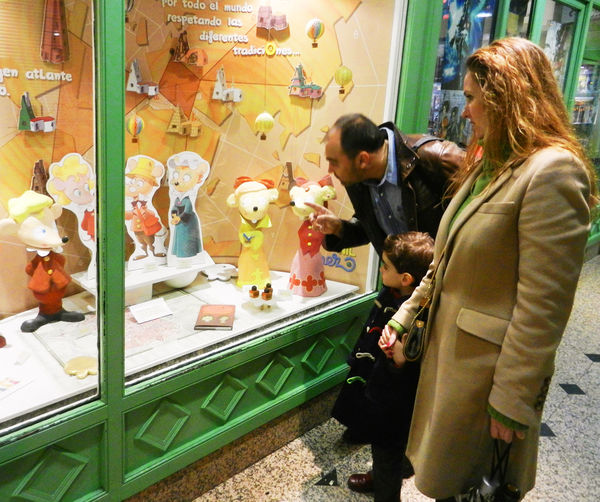Europe’s Oddball Museums Broaden Perspectives
By Rick Steves
You could spend a lifetime in Europe's grand museums — the Louvre, the British Museum, and many others. But I also like to take in a destination's more idiosyncratic sights, getting a bead on the quirkier side of the local culture. It's in my nature as a travel writer to look for the rustic, old-fashioned, and odd bits that fall through the cracks.
During a recent trip to Madrid, I visited the Royal Palace and the superb collection of paintings at the Prado Museum, as I always do. But even more fun, I went to Casita Museo de Ratón Pérez, a tiny museum busy with enthralled and wide-eyed kids, who came to meet a mystical little mouse. Ratón Pérez, a kind of four-legged tooth fairy, gives candies to Spanish kids when they lose a tooth and put it under their pillow. There was ample evidence of the mouse everywhere in the museum — including a six-inch-tall bronze statue in the lobby — but the magical rodent himself was nowhere to be found.
Prague's Toy Museum (Muzeum Hraček), with an entire floor devoted to the Barbie doll, is another place that sounds silly but is actually great. Sitting just past the exit gate of Prague Castle (fascinating, but exhausting, to tour), it's a refreshingly light attraction — a vast collection of all things Barbie, dating back to 1959, with social commentary. Looking at the buxom first-edition figure, you can understand why these sirens of capitalist discontent that objectified women's bodies weren't allowed here until 1989.
Less lighthearted — but no less interesting — is Vienna's Third Man Museum, dedicated to the classic film set in 1949, when the city was divided, like Berlin, between the four victorious Allies: the US, France, Britain, and Russia. The movie still plays in Vienna a few times a week; the museum is open only on Saturday afternoons. "Third Man" fans will love the movie relics, but even if you're just interested in Vienna at the start of the Cold War, it's worthwhile. Sections cover the 1930s when Austria was ripe for the Anschluss, the reality of 1.7 million "DPs" (displaced persons) in Austria after the war, the challenges of denazification after 1945, and candid interviews with soldiers. You'll also get a fascinating look at moviemaking and marketing circa 1950.
More history is explored through Peter the Great's personal collection of scientific oddities in the oldest museum in St. Petersburg: the Kunstkamera. Three hundred years ago, Czar Peter I became Peter the Great because of his huge personality — he was a traveler, city planner, warrior, scientist, and the westernizer of Russia. The Kunstkamera includes his freak show — typical of the period — of all kinds of human and animal deformities preserved in jars. Not for the faint of heart, this might be Europe's most offbeat — and nauseating — sight. While many tourists dismiss the Kunstkamera as a "museum of curiosities," locals are proud of its scientific tradition.
In the Italian alpine village of Castelrotto (Kastelruth), citizens are proud of the folk-singing group Kastelruther Spatzen, a gang of local boys known as the "ABBA of the Alps." (The lead singer, Norbert, is a Germanic heartthrob on par with Tom Jones.) In the basement of the Kastelruther Spatzenladen shop is a homespun little museum devoted to the singers, slathered with gifts, awards, and gold records. The group has won 13 Echo Awards…"more than Robbie Williams." You can watch a continuously playing video of these idols to see if you're ready to join their legions of fans, who hail from as far away as the Alsace, Switzerland, and the Netherlands.
The Museum of Broken Relationships in Zagreb, Croatia, is just as weird, featuring true stories from failed couples from around the world, together with items representing their relationships. In addition to the predictable "he cheated on me so I broke his favorite fill-in-the-blank" tales, the ever-changing collection delves into many types of fractured connections. You'll see discarded wedding albums, sex toys with stories about unreasonable requests, and plenty of items broken with vengeful wrath. The poignant, and at times hilarious, items and stories provide insights into a shared human experience.
All over Europe, each quaint and unique museum helps me understand a place's values and customs. They're fun, and they open up my world.

